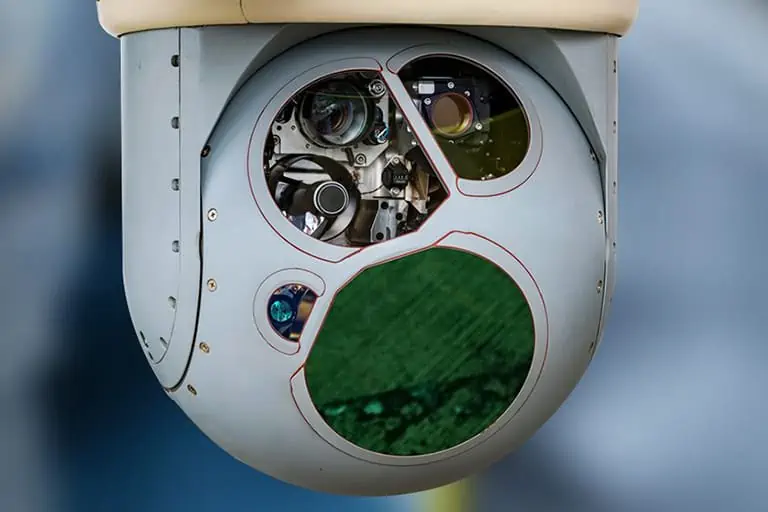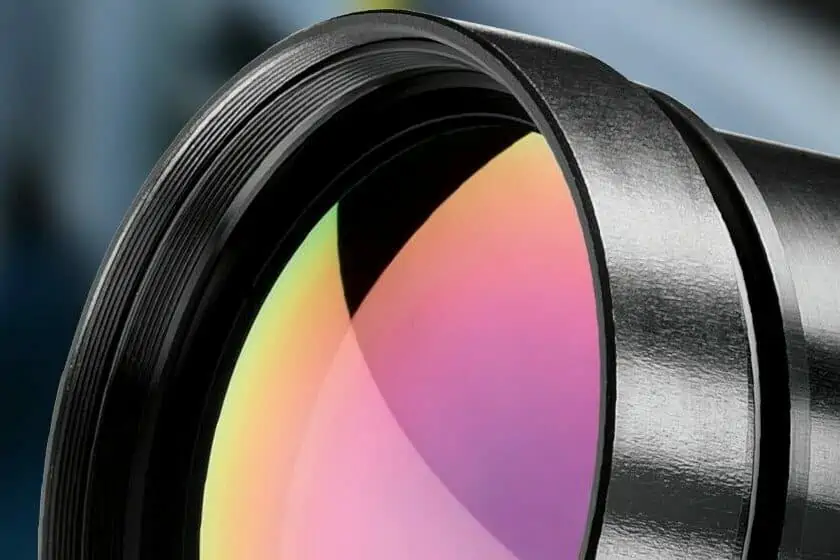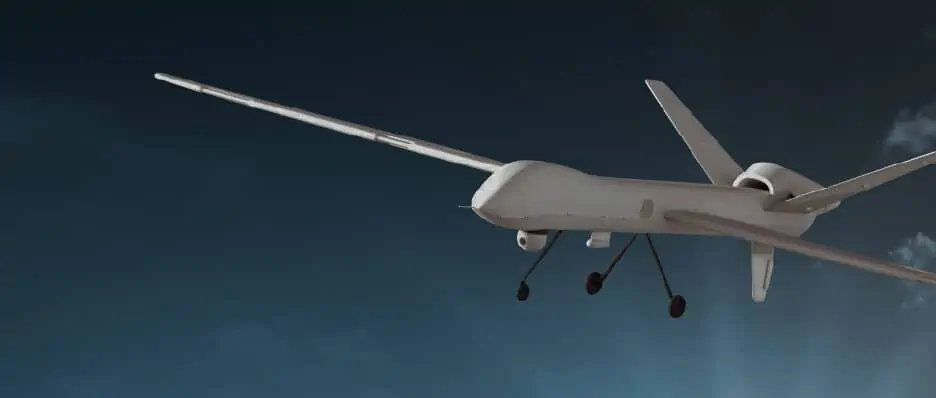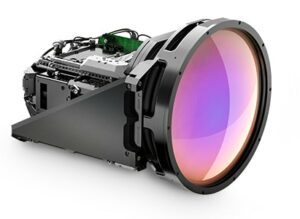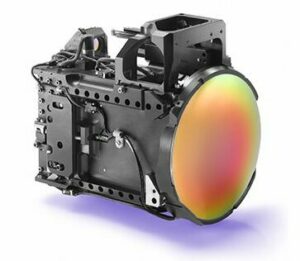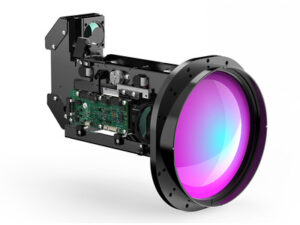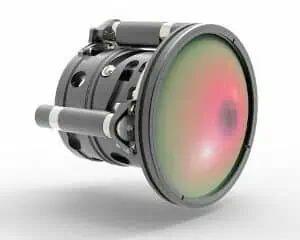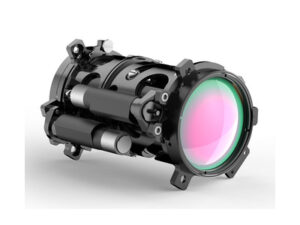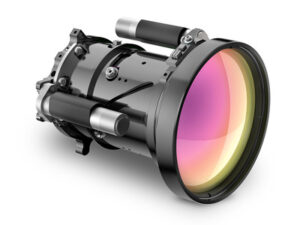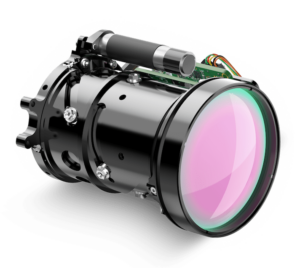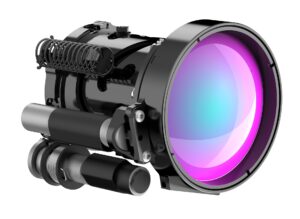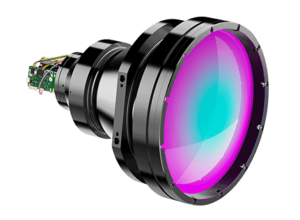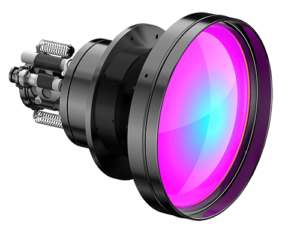Ophir Optronics Solutions LTD., an MKS Company, is a leading designer and manufacturer of low-SWaP, ruggedized, high-performance MWIR and LWIR lens assemblies for UAVs (unmanned aerial vehicles) and drones. Our low-SWaP (size, weight and power) Infrared zoom lenses are ideal for UAV/UAS thermal imaging payloads and forward-looking IR (FLIR) cameras, and also meet the needs of a wide variety of demanding applications in defense, HLS, security & surveillance and other emerging markets.
Military-Grade UAV Lenses for Infrared Cameras
Ruggedized lenses for thermal imaging cameras and sensors
We provide a range of lightweight, military-grade IR camera lenses designed to meet the needs of challenging aerial defense applications. With focal lengths from 1.8mm to 1350mm and MTF close to the diffraction limit, these ruggedized lenses feature accurate line-of-sight (LOS) performance and provide detection, recognition, and identification (DRI) ranges up to 28km.
Ophir sites are AS9100 Rev. D and ISO 9001-2015 certified, delivering military-grade IR camera lenses in compliance with the following standards:
- DIN 3140
- IPC 620
- MIL-PRF-13830
- MIL-PRF-85285
- MIL-STD-810
- MIL-C-48497
- MIL-C-48616
- ISO 10110 sections 1-19
- ANSI\ASQ Z1.4
More information: Military-Grade UAV Infrared Camera Lenses >
Extended Range Cooled MWIR Infrared Camera Lenses for UAVs
SupIR 50-1350mm f/5.5
Continuous zoom MWIR lens for long-range detection
SupIR 28-850mm f/5.5
High-resolution thermal imaging lens
FoldIR 30-450mm f/3.4
MWIR drone imaging lens with compact folded optics
Low-SWaP MWIR & LWIR Infrared Camera Lenses for Drones
LightIR 15-75mm f/1.2
Compact continuous zoom LWIR lens
LightIR 10-135mm f/3.6
Small form factor MWIR thermal imaging lens
LightIR 16-180mm f/3.6
MWIR Folded zoom lens for aerial thermal imaging
LightIR 18-225mm f/3.6
Low-SWaP MWIR lens with 15km detection range
LightIR 18-225mm f/4
Lightweight motorized continuous zoom lens for UAV payloads
LightIR 20-275mm f/5.5
High-performance MWIR drone thermal camera lens
Counter-UAS Systems
IR thermal imaging lenses for CUAS
Ophir provides a variety of high-performance continuous zoom IR lenses that are ideal for incorporation into counter-UAS systems. With proven field deployments, the long-range lenses facilitate detection, identification and tracking of multiple drone threats.
Delivering crisp clean imagery over the full zoom range, the precision lenses allow counter-drone systems integrators to take full advantage of early radar detection, minimizing false positives even with small, fast-moving targets.
LWIR Solutions
- Aperture f/1.5
- Pixel pitch 12μ
- Focal length ranges 25-225, 40-300mm
- Drone detection ranges 1.8 – 9.7 km (dependent on target size)
- Drone identification ranges 0.3 – 2.2 km (dependent on target size)
MWIR Solutions for SXGA/HD cameras
- Aperture f/4
- Pixel pitch 10μ
- Focal length ranges 21-420mm, 35/110/450mm, 30-600mm, 35-690mm, 45-900mm, 60-1200mm
- Drone detection ranges 3.5 – 23.8 km (dependent on target size)
- Drone identification ranges 0.6 – 8.4 km (dependent on target size)
MWIR Solutions for VGA cameras
- Aperture f/5.5
- Pixel pitch 15μ
- Focal length ranges 30-385, 50-700, 28-850, 80-1200, 50-1350mm
- Drone detection ranges 2.7 – 22.7 km (dependent on target size)
- Drone identification ranges 0.4 – 8.0 km (dependent on target size)
More information: IR Thermal Imaging Lenses For C-UAS Systems
Extended Range Cooled MWIR Infrared Camera Lenses for C-UAS
SupIR 50-1350mm f/5.5
Continuous zoom MWIR lens for long-range detection
SupIR 80-1200mm f/5.5
Long-range thermal imaging lens with >26km detection capability
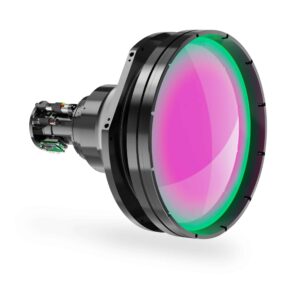 SupIR 60-1200mm f/4
SupIR 60-1200mm f/4
HD-format MWIR continuous zoom lens
SupIR 28-850mm f/5.5
High-resolution thermal imaging lens for C-UAS systems
SupIR 50-700mm f/5.5
Rugged MWIR lens for counter-drone detection
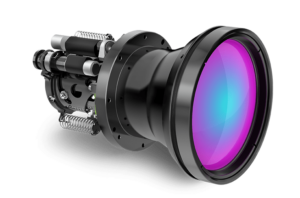
SupIR 30-385mm f/5.5
Thermal imaging lens for long-range surveillance
Ophir’s US-ITAR-certified European Manufacturing Site in Romania
Strategically located in NATO-member Bucharest, our facility has expanded its manufacturing capacity to meet the surging demand within the defense industry. Specializing in customized optical components, we deliver unparalleled expertise and cutting-edge technology to provide high-end optical components and IR lens assemblies that meet the strictest demands of defense industries worldwide. From prototyping to serial production, our team ensures precision and quality in every component we produce, empowering our customers’ electro-optical defense systems to thrive in challenging environments. With a focus on collaboration and excellence, Ophir’s European manufacturing site stands ready to be your trusted partner in achieving success in the defense industry.





